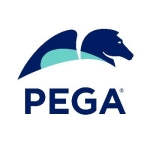What is our primary use case?
I'm working for one project where we're trying to automate processes for a logistics company, specifically in their back-office accounting processes.
We're using Studio, Orchestrator and the bots. In other words, we're using the whole platform.
How has it helped my organization?
When we were implementing it, we were empowering people. In this company, everybody has their own work and they were really in their own area. Then we started this project and they got empowered to change the way they were working. UiPath is so open that everybody can take part in it.
That was one thing that changed right away. Another thing was the way they think about processes and where there are possibilities to automate has really changed. Before, they never thought about automating all these processes but we told them there is a possibility. Now, when they're having strategy meetings, they have dedicated time slots where they're just talking about processes that could be automated. The whole mindset is changing now.
We have a virtual environment that we use.
We haven't touched the processes where there would be human errors that much. We started with the really basic ones that are so easy that people don't make errors there. We will get to the more complex processes, but we haven't yet.
The solution has definitely saved time.
What is most valuable?
Orchestrator lets you start a credential stair, so you can get the credentials in a safe way. Before this, they were afraid that credentials would be stored somewhere and people could see them. I think it's really important for our customers that you can do that in Orchestrator. The scheduling feature is also valuable of course.
In terms of ease of use, I would rate this solution as four out of five. I think it's very easy, but our customers are sometimes not so technical. When they come from the business side, it's somehow hard for them to understand.
I would give the RPA Academy training program five out of five. Without it, I don't think I could have started implementing this solution. I did the developer program just for a general understanding of how everything works: how Orchestrator works and how it all works together. For me, it was really important to do the training then. It was very good, so I really liked it.
What needs improvement?
It's really hard for me to get all the machine learning and AI parts. I think maybe that's going to get a little bit easier for me to understand how to really use it in the company. I don't really know what to do with it at the moment. I think that is something that could be improved.
I tested the live sessions and we saw some parts of StudioX. There were some things that were so easy there. I think it would be good if they would put it also in Studio, for example. The carts they have are in color. We try to get people in the company, even if they're not technical, to implement the bots or processes by themselves. I think some parts they changed in StudioX could be really helpful in Studio skills.
What do I think about the stability of the solution?
I would rate their stability as three to four out of five, but I would say that's probably because we don't know how to use it best. That is why we sometimes have issues that something's not working.
What do I think about the scalability of the solution?
We are a consultancy firm but the customer that we are working with has about five people in the core team that are working with this solution.
How are customer service and technical support?
Both customer support and technical support are very good. I think the chief from my customer and the UiPath technical team had many phone calls because the virtual machine didn't work at first. They were in contact and I think two days later it was working.
Which solution did I use previously and why did I switch?
I can only speak for my client, who is undergoing a huge digital transformation. They're a small German company and they just know if they don't change something other companies will get ahead. In Germany, there are many family-owned firms and the owner just saw the need to change. We told them about RPA and they got very excited. We showed them the first pilot bot and they were set.
We chose UiPath, for the same reasons you can read on the internet. If you look at the Gartner and Forrester reports, I think they all say UiPath. Also, it's just so easy to get started. You just download the community edition and you're starting. Then you do the Academy and you actually know how to do it. It's very easy and very fast. All the statistics say it's the best.
How was the initial setup?
In terms of the setup, because we were using the community edition first, and then we licensed it afterward, we had the first bot running in about a month.
What was our ROI?
We have seen ROI and performance benefits. We are still at the beginning but we can definitely see it. I think we could see after about a week that we had processes that the company didn't have to do anymore and so they had more time.
What's my experience with pricing, setup cost, and licensing?
So far, our first customer started with just Orchestrator and an unattended bot, along with a couple of studio licenses. I don't know the cost. Maybe $25,000 for the year.
I would definitely say it's worth the money.
Which other solutions did I evaluate?
We did a little research obviously. We looked at Automation Anywhere and Blue Prism, but that's it. We didn't really look too deep. We just saw UiPath and said, "Okay, I think that's a fit for us." And then we went for it.
What other advice do I have?
I would rate this solution as eight out of ten because of what I see from the stage we're in now. There are things that can improve and they are all working on improvement. I still think that at its current state, it's really beneficial for a lot of companies.
I would recommend UiPath. I like the company and I like their products.
Which deployment model are you using for this solution?
Private Cloud
Disclosure: My company has a business relationship with this vendor other than being a customer. Partner.

















